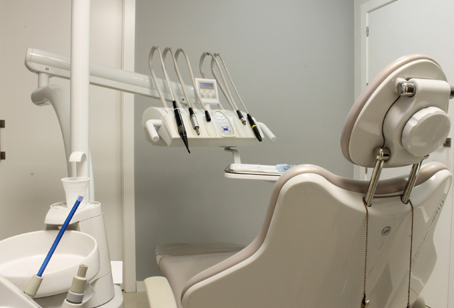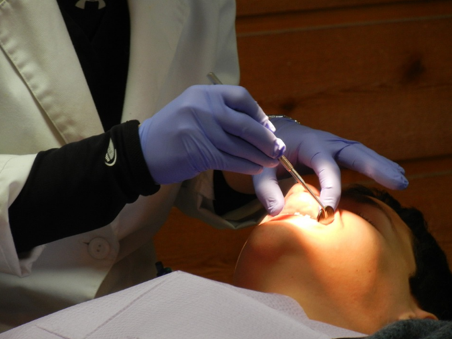What are the tools used in the root canal procedure? A root canal is a dental procedure that helps eliminate bacterial infection. The infection grows inside your tooth pulp, thereby causing inflammation and pain. The root cause of bacterial infection is an accumulation of food particles on the enamel. An endodontist performs a root canal and removes the infected and inflamed pulp from your dental system. Endodontists specialize in root canal procedures. Because they have extensive experience, they can easily conduct this complex treatment process and treat you for pain and infection. Here are some benefits of saving your tooth from a root canal:
- Natural appearance
- Efficient chewing
- Prevents excessive strain or wear
- Normal sensation and biting force

Tooth decay and damage is a critical problem that results in tooth loss. However, you can save your tooth if you visit an endodontist in time. They will recommend a root canal as the best treatment. If you have no idea about the treatment process and the tools this procedure requires, you should go through this article. Below, we will explain some important tools an endodontist uses for a root canal. Knowing about the tools and procedures will help you prepare for the treatment. However, if you want a one-on-one session with a professional endodontist, visit Bryant Park Endodontics. They will explain the complete process in detail. Now let’s get a general idea about the root canal procedure:
Tools Used in the Root Canal Procedure
A root canal is no simple dental procedure. To perform this treatment, a professional endodontist uses specialized tools. Here is the list of tools:
1. Endodontic Burs
The first tool that every endodontist uses while conducting a root canal is endodontic burs. This instrument opens up the inner part of your tooth to make canals more prominent. Therefore, when an endodontist wants a clear look at the root canal, they use this tool to expand your mouth. Many different types of burs tools are available, based on their sizes and colors. A major benefit of using burs is to access the pulp chamber. The endodontist will use different types of burs to access different parts of the mouth. The burs come in a box with all the useful instruments in time.
2. Root Canal Explorer
A root canal explorer is a small and pointed tool that’s helpful to examine the inside of the tooth. An endodontist will access the tooth using burs and the explorer to find orifices. The doctor will also remove a bit of calcification from the tooth. This is a durable instrument with stainless steel construction. It helps a dental surgeon locate the canal before the shaping and cleaning process.
3. Excavators
Like root canal explorers, excavators help explore the canal and remove mineral deposits from the tooth surface. The only difference between an explorer and an excavator is size. It is a bit longer and gives more control. The endodontic excavator also helps remove small parts of your tooth’s dentin. It contains sharp blades that cut through the soft dentin layer. Digging holes using this tool enables endodontists to extract tooth pulp as well as clear the canals.
4. Barbed Broach
A barbed broach is a small piece of wire that helps remove tooth pulp tissues. An endodontist uses this dental instrument while performing a root canal. There are different types of barbed broaches for certain functions. For instance, a smooth barbed broach works as a pathfinder to identify a root canal. The rough barb wires contain sharp barbs that grab and pull pulp tissues.
5. Files and Reamers
Similar to barbed broach, files and reamers come in different sizes helpful for multiple purposes. For instance, there is a K-reamer that enlarges the canal as well as transports the debris. It moves in a screwing motion and cleans the canals. K-reamer is also available in nickel-titanium. Endodontists first use the smallest file to open and expand canals. These surgical instruments are critical when performing a root canal. The actual purpose of this tool is to clean and shape the canal.

6. Gates-Glidden Drills
Gates-Glidden is a dental drill that gives the endodontist access to the canal, especially in molars. Endodontists use this instrument in root canal procedures. This involves the removal of gutta-percha. Gutta is a putty-like substance that works as canal fillings.
7. Peeso Reamer
During retreatment, endodontists use this tool to remove gutta-percha.
8. Ultrasonic Instruments
Ultrasonic instruments have numerous functions. Doctors use it to remove endodontic and restorative materials as well as uncover calcified canals. The machine operates in a vibrating motion and produces a high-pitched sound.
Tools Used in the Root Canal Procedure: Conclusion
A root canal is a complex treatment process to remove the infected pulp from the tooth. While general dentists can perform a root canal, you should visit an endodontist as they specialize in this procedure.
Visit our clinic in NYC and consult with a professional endodontist. They will diagnose your tooth’s condition and perform a root canal if it is necessary.
Bryant Park Endodontics
Young Bui, DDS
30 East 40th Street Suite 1201
New York, NY 10016
646-205-3045
Drendo4u@yahoo.com
Sources
https://eastcoastendova.com/what-tools-are-used-in-root-canals/
https://www.aae.org/patients/root-canal-treatment/what-is-a-root-canal/

[…] Tools Used in the Root Canal Procedure […]